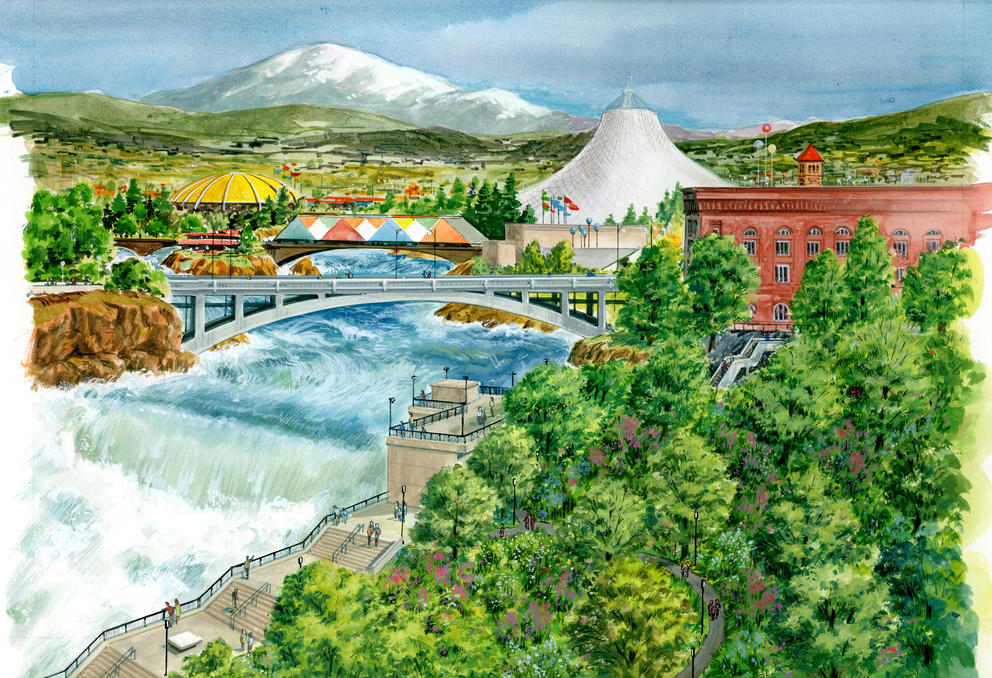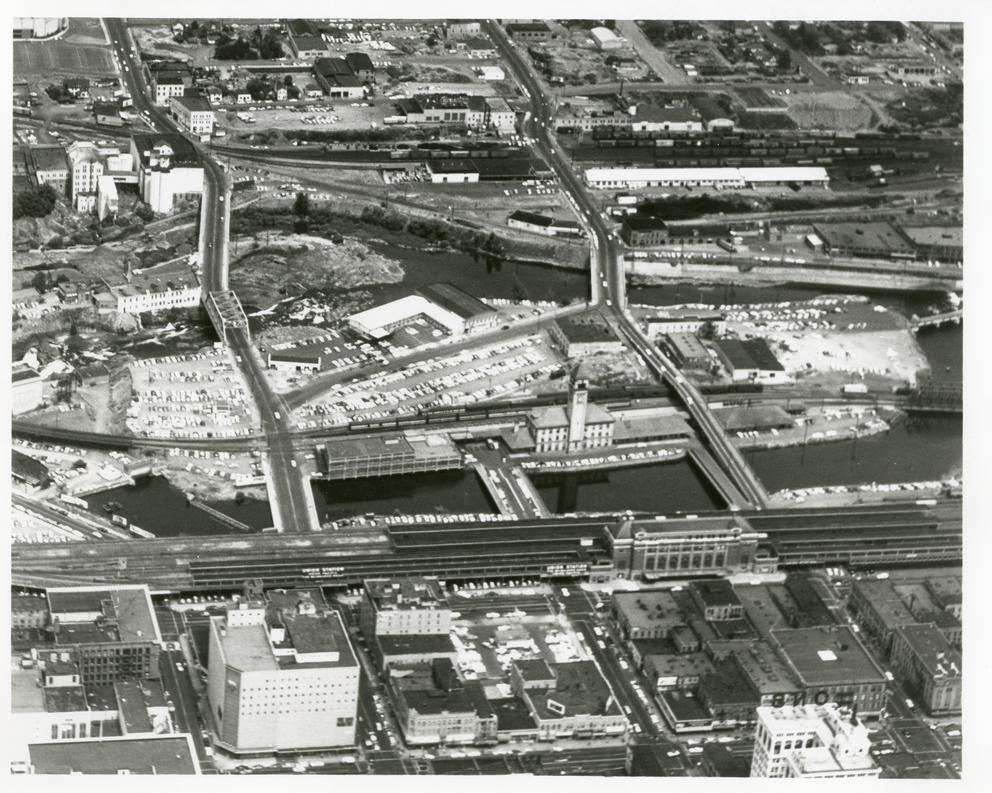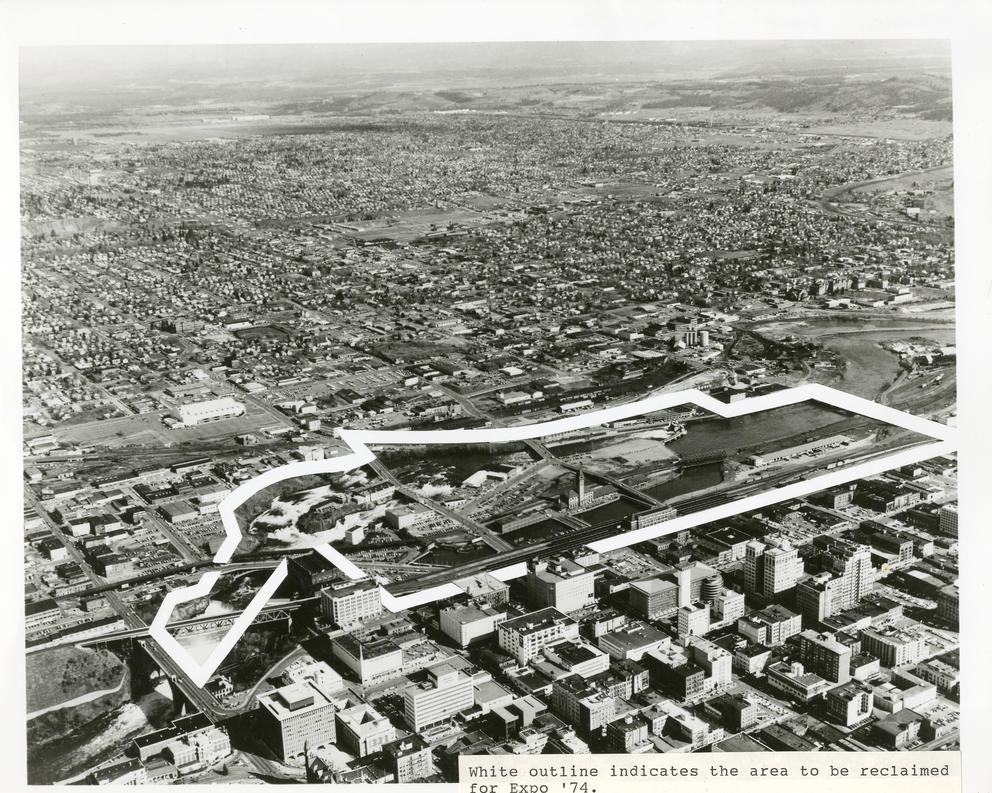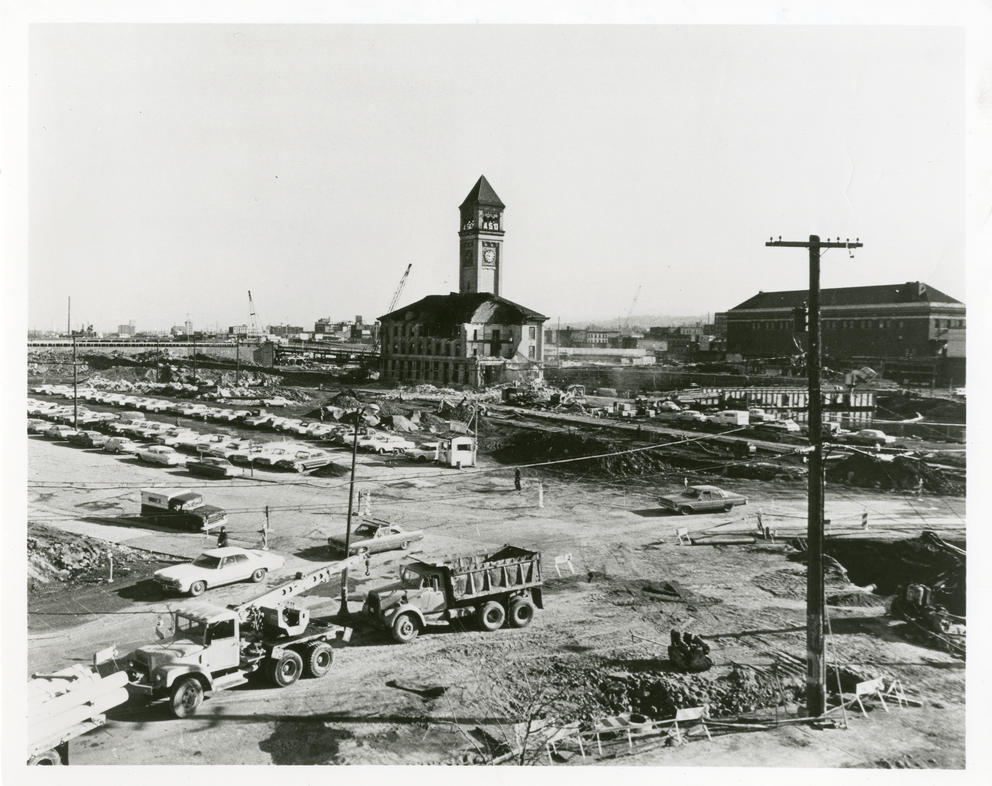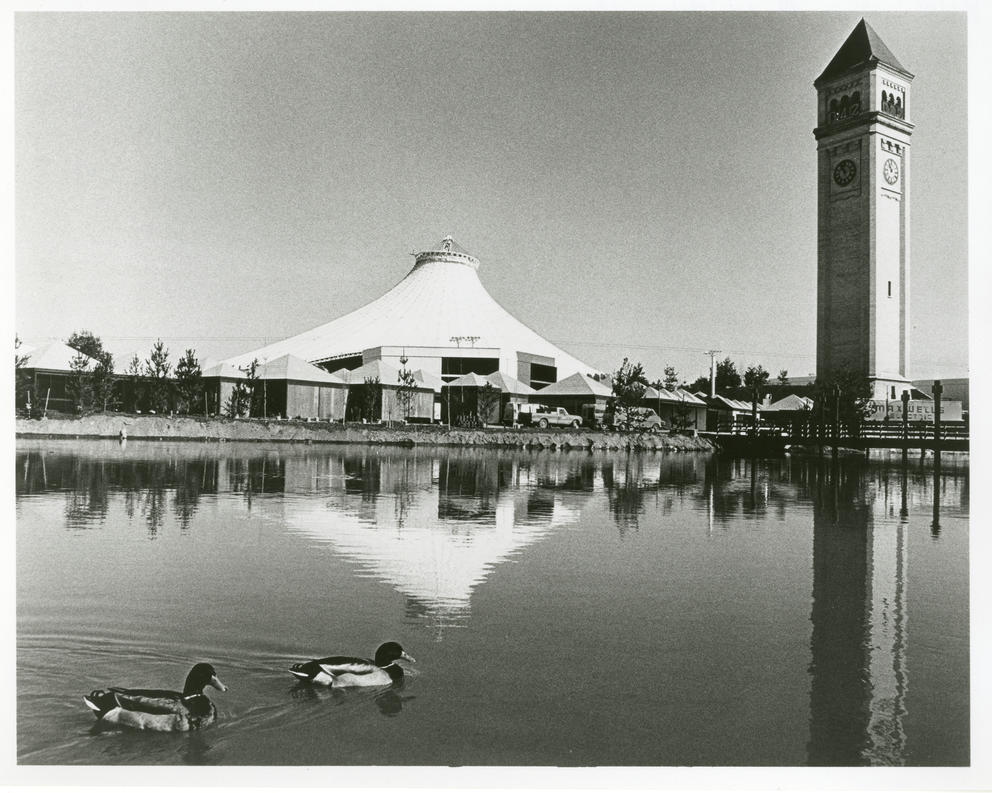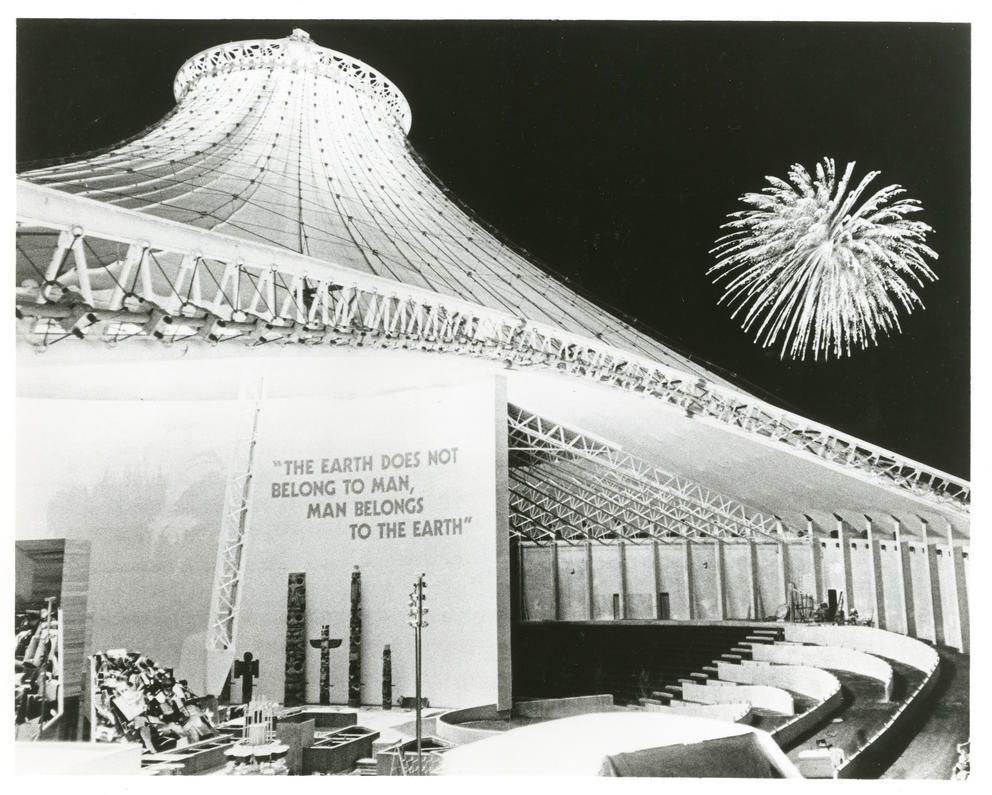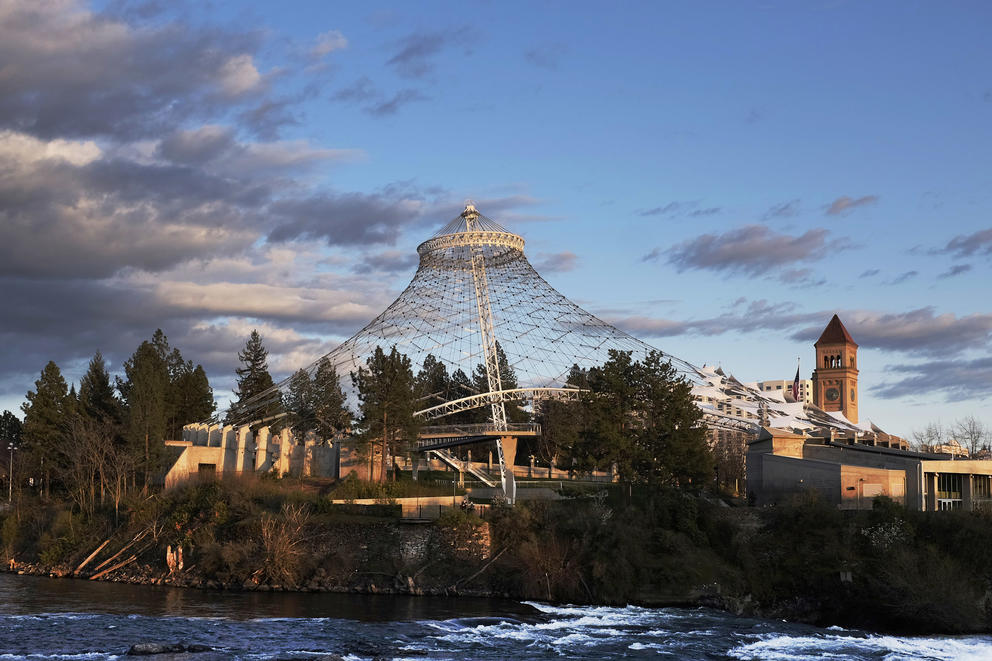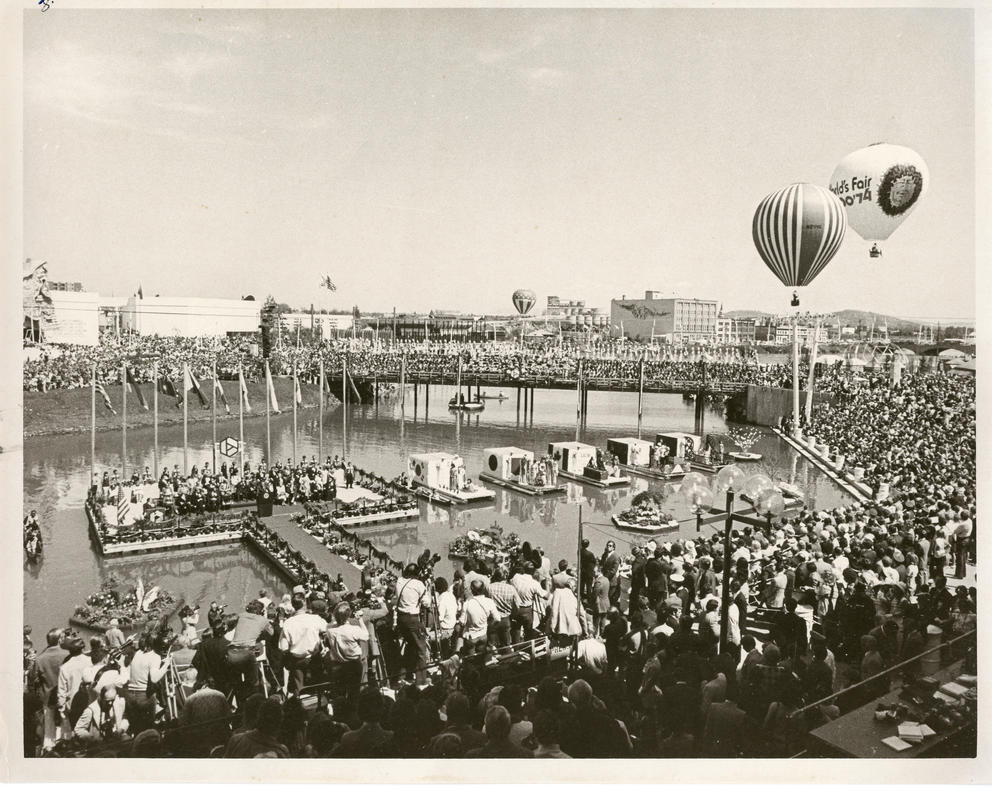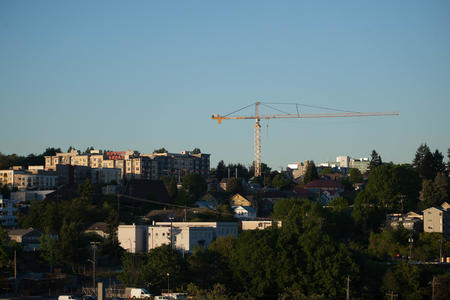During Expo ’74, the newly prominent views of the rushing falls were a centerpiece for visitors who felt the spray as they crossed foot bridges over the water.
The fair lasted six months. After it ended the site was transformed into Riverfront Park, a downtown oasis that is the center of many annual Spokane celebrations like the Bloomsday Run 12K, the Hoopfest basketball tournament and the food festival Pig Out in the Park.
Now, as downtown faces new challenges with rising crime and a growing homeless population, residents are taking time to look back at the lasting impact of the fair.
“Expo 50 is an initiative of the city to celebrate the 50th anniversary of a transformative event in Spokane,” said Matt Santangelo, program director for the nine-week celebration that begins May 4.
“This is not a world’s fair,” Santangelo, a former basketball star at Gonzaga, noted. “It’s the anniversary of a world’s fair.”
There was no thought of a World’s Fair here in 1966 when what was to become the site of Expo ’74 was still a congested industrial area that blocked the city’s access to the scenic Spokane River falls and rapids. Railroad yards and related warehouses and parking lots dominated Havermale Island and smaller Cannon Island, which Canada turned into a children’s park, renaming it Canada Island. (Courtesy of the Spokane Public Library)
Expo ’74 was somewhat ahead of its time by choosing environmental protection as its theme. The environment will also be a major theme of the anniversary celebrations, along with a focus on area Native American nations, arts and culture and recreation and sports, Santangelo said.
The 50th-anniversary celebrations come at a good time, Santangelo said.
“There is still a pandemic hangover,” Santangelo said. “Spokane, it’s time to come out and play!”
Erin Hut, a spokesperson for new Spokane Mayor Lisa Brown, called Expo ’74 a “pivotal moment in our history.”
The anniversary is “a great opportunity to encourage our community to go downtown,” she said.
Five decades after the fair opened, it can be difficult to understand the event’s magnitude. For that we turn to Bill Youngs, a history professor at nearby Eastern Washington University who wrote a definitive 600-page book about Expo ’74 called The Fair and the Falls.
“The great success of the fair was that it was a confidence-booster for the city as a whole,” Youngs said, noting that the event provided a $100 million injection of urban renewal.
The key benefit was transforming the “rundown, dark center of town” into the “most beautiful riverscape in any American city,” he said.
According to a history of the fair published by HistoryLink.org, a free online service of Washington state, a group of downtown business and property owners began a process to revitalize downtown Spokane in 1959.
When that effort stalled, the leaders in 1963 decided to hire King Cole, a professional executive with urban renewal experience. Around the same time, Spokane leaders were thinking about commemorating the centennial of the city’s founding in 1873.
They wondered if that celebration could finance the riverfront restoration. But a study concluded the city would be throwing money away if it held a strictly local centennial celebration.
If Spokane really wanted to make lasting improvements, it should set its sights much higher, the report said. An international exposition would attract federal and state dollars, lure visitors from around the world, and could result in a completely transformed riverfront.
Ducks swimming in the forebay of the Spokane River illustrate the theme of Expo ’74, “Celebrating Tomorrow’s Fresh, New Environment.” What was the site of a decaying railroad yard and city center became the location for the first environmental World’s Fair. Shown here are the U.S. Pavilion and the Great Northern Railroad Tower. (Courtesy of the Spokane Public Library)
Spokane leaders became excited about the idea of a world’s fair. But they had to make certain the idea was practical. No city as small as Spokane – which had a population of about 170,000 at the time – had hosted a world’s fair.
They contacted the Bureau of International Expositions in Paris, which governed such events. The bureau indicated that a Spokane exposition could be held in 1974.
Since the mid-19th century, more than 100 world’s fairs have been held in more than 20 countries. The most recent was in Dubai in 2021.
In Spokane, the race began to get a world’s fair opened in fewer than four years.
A star shell bursts behind the United States Pavilion during a fireworks display at Expo ’74. The pavilion, whose theme was “Man and Nature: One and Indivisible,” prominently features the words of a Suquamish Indian chief who rebuked a delegation of white settlers who wanted to buy his land more than a century ago. (Courtesy of Spokane Public Library)
Spokane leaders turned for advice to Seattle, which had hosted a fair in 1962, Youngs said. They were told a world’s fair was an excellent idea that should be pursued.
Fair leaders got pledges of $1.3 million in start-up money, mostly from Spokane businesses. The Washington Legislature provided nearly $12 million in state tax dollars to build the Washington State Pavilion, which would later become the Spokane Opera House and Convention Center.
The Spokane City Council, meanwhile, passed an unpopular business and occupation tax which raised $5.7 million to tear out the railroad tracks and prepare the fair site.
In October 1971, President Richard M. Nixon gave Expo ’74 his official sanction. King Cole and a Spokane delegation then went to the Bureau of International Expositions in Paris, where they received the bureau’s unanimous sanction as an official “special exposition.”
Washington’s powerful Congressional delegation, led by Sen. Henry “Scoop” Jackson, Sen. Warren Magnuson and Rep. Thomas Foley, garnered an $11.5 million appropriation to build the U.S. Pavilion.
City officials persuaded Spokane’s three railroads to move. The Union Pacific, Milwaukee Road and Burlington Northern donated 17 acres of land to the city, worth many millions, and consolidated their routes on tracks away from downtown.
Now Cole’s job was to persuade the world to show up. He eventually got commitments from the Soviet Union, Japan, Taiwan, South Korea, Canada, Australia, Iran, West Germany and the Philippines.
Luring corporate pavilions proved easier.
Ford, General Motors, General Electric, Eastman Kodak, Boeing and the Bell systems signed up for pavilions. So did the states of Oregon and Montana, as well as the Church of Jesus Christ of Latter-day Saints.
In the next two years, the site was transformed from rail yard to mud pit to environmental showcase.
On May 4, 1974, President Nixon declared the fair open in a ceremony attended by 85,000 people. About 1,200 journalists were accredited for the opening.
Attendance averaged about 35,000 per day over the summer months. About half came from Washington state, followed by visitors from, in order, California, Oregon, Montana and Idaho. Only around 10% came from foreign countries, and most of those were from Canada.
The fair featured an enclosed gondola ride that transported sightseers across the Spokane Falls; it dropped so close to the falls that the windows were sprayed by the mist. That ride remained after the fair and became part of Riverfront Park, where it is still running today.
There were almost-daily concerts. The big names included Liberace, Bill Cosby, Bob Hope, Jack Benny, the Pointer Sisters, Helen Reddy, the Carpenters, Grand Funk Railroad, Bachman-Turner Overdrive, Merle Haggard, Buck Owens, Van Cliburn, Chicago, Charley Pride and Ella Fitzgerald.
The fair ultimately drew 5.1 million visitors, nearly identical to the organizers’ projections. Compared to attendance at other world’s fairs, it was near the low end, only about half of what Seattle had attracted in 1962.
As soon as Expo ’74 was dismantled, work began to transform the site into Riverfront Park. In 1978, President Jimmy Carter came to Spokane to dedicate the park.
Spokane’s new downtown geography gave the city a lasting new energy infusion. Today, shoppers, tourists and downtown office workers stroll unimpeded to the river and the falls. The park is studded with artwork and features an ice rink, a carousel and a concert venue.
But 50 years on, downtown Spokane is struggling again. The pandemic caused many downtown businesses to close. The push to work from home shrunk commercial real estate rentals dramatically. And the city’s homeless population has surged.
Crowds of homeless people are living in the downtown core, often on the streets, where trash and human waste have become common sights for pedestrians. Crime is up downtown and many residents are staying away.
The Washington Hospitality Association noted 14 restaurants closed in downtown Spokane in just the fourth quarter of 2023.
But no one is talking about a new world’s fair to save downtown.
Rather, local officials are opening more shelters, spending more money to clean the streets and cracking down on illegal campsites, said spokesperson Hut.
“One of the big things we heard is that we need to bring city employees back to the office,” said Hut, who added that the mayor is working on this.
The city is also promoting downtown attractions, such as the upcoming Expo 50 celebration.“We’d like to see more people come downtown and enjoy the amenities,” Hut said. “There are lots of good things to celebrate.”

